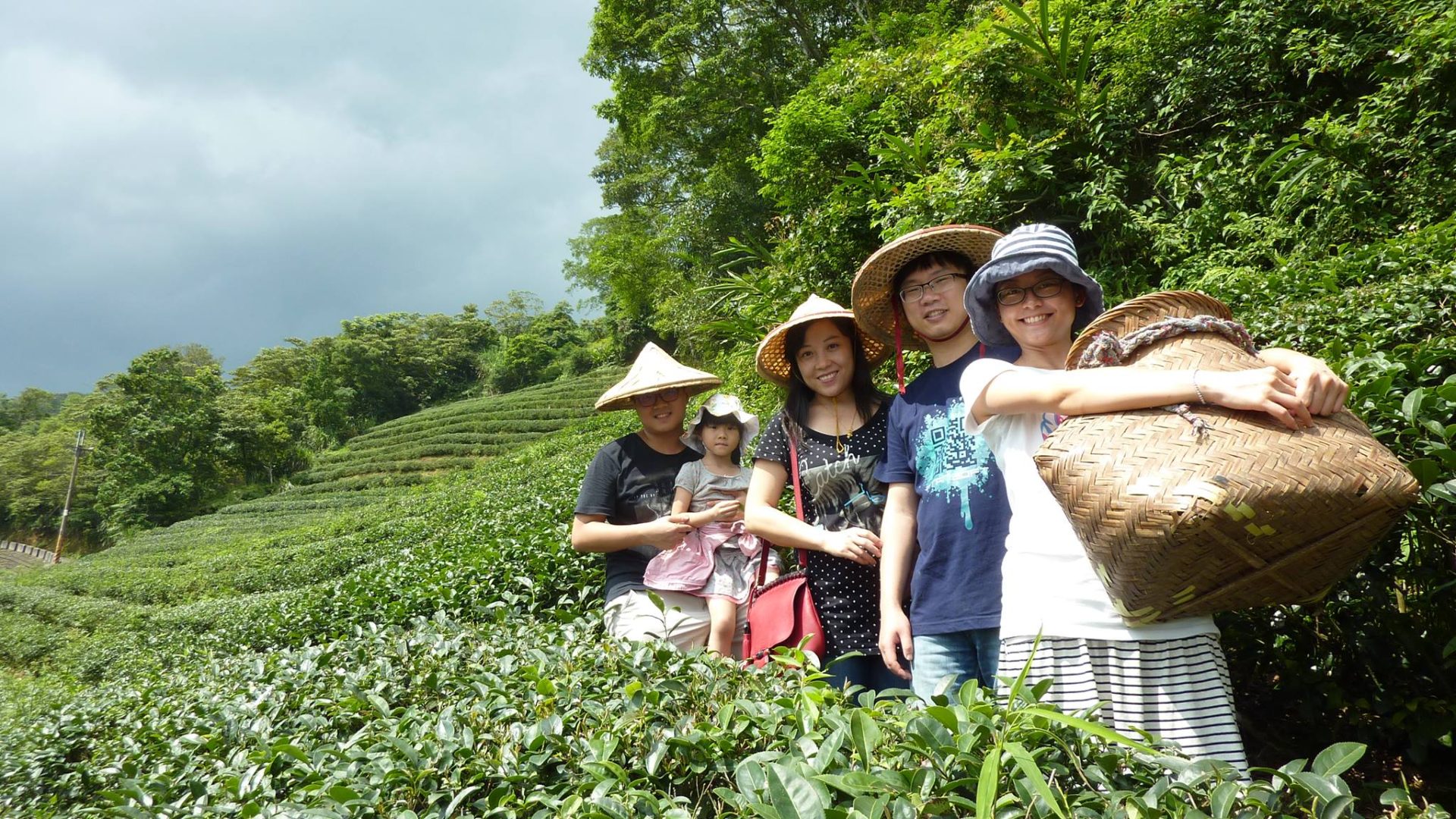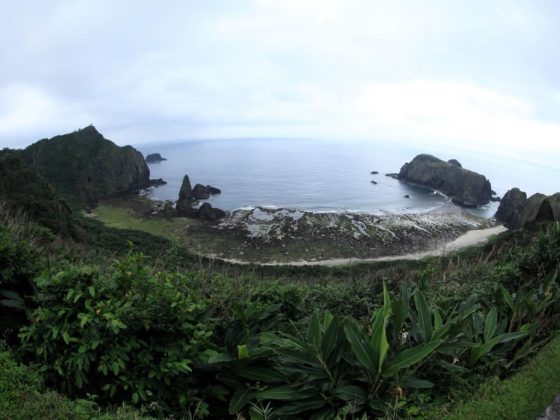Text by Rick Charette
About
In the great jumbled mass of high hills and low mountains between the city of Taipei and the northeast coast are the quaint, timeless towns of Pinglin (坪林) and Shiding (石碇). The word “towns” is now officially a misnomer – each is at the center of what is termed a “district” of the same name in sprawling New Taipei City, inaugurated in 2010, which encircles Taipei. The waters of the small, twisting, shallow rivers that meander through the towns run down into the Taipei Basin, where the urban cores of Taipei/New Taipei City are found, then off to sea at Tamsui port on the north coast. (Read More: A Day of Tea – Tea Culture in
The waters are pristine. The area’s long, serpentine Feicui Reservoir (翡翠水庫), inaugurated in 1987, is source of the majority of Taipei/New Taipei City treated water. To ensure water quality, pig farms, rice-paddy farms, and other polluting industries in the heavily forested region were shut down. This is an area of traditional family-owned enterprises, many in place multiple generations, and tea production is the undisputed king. The tourist-friendly plantations, along with other tourist-oriented operations such as makers of handmade noodles, osmanthus growers, etc., attract streams of day-trippers. Key to the quality of their offerings are the clean water, air, and soil, and most ply their trades in essentially the same way their grandparents and even great-grandparents did, providing unique “living” glimpses into Taiwan’s past. The focus is on small-scale production and proud, time-honored craftsmanship.
MyTaiwanTour and the New Taipei City Government have teamed up to craft two new guided day-trip bus tours to the area, launched from downtown Taipei, with “tea culture and old-time flavors” as theme. They are being run until the end of the year, and offered at a special low introductory price. Response will be gauged and decisions then made on their future format. Here is a sampler of some of the places you’ll be visiting, along with some of the general background information your trained, experienced guides will provide you.
Tea Culture
The lovely Pinglin Tea Museum (坪林茶葉博物館), on a slope overlooking the Beishi River and, across, sleepy Pinglin’s single busy street, lined with teahouses, evokes the architecture of the four-sided courtyard-residence complexes of south Fujian gentry in imperial days. The ancestors of most Taiwanese came from mainland China’s south Fujian, from the mid-1600s through early 1800s. An important tea-cultivation area, many brought tea plants for transplantation.
The main type produced in the Pinglin/Shiding area is Wenshan Baozhong (文山包種茶), an Oolong. This is Taiwan’s main area for Baozhong, Taiwan’s best. Refurbished in 2010, the museum’s exhibits are spread over two floors. Perhaps most interesting are the displays on tea production from the Tang Dynasty to the present, and on the beloved tea-drinking culture.
Oh! The Things You’ll Know! Old China Traditions
Did you know? In the 8th century, when scholar Lu Yu (陸羽) wrote The Classic of Tea (茶經), leaves were mashed into a paste and dried as tea bricks. During the Song Dynasty (960~1279), dried leaves were powdered and whisked with hot water and drunk from a bowl. To this point tea was still seen as a medicine. The “powder” tradition was picked up by the Japanese, who continue it to this day. It was only during China’s Ming Dynasty (1368~1644) that the use of teapots became commonplace. After your museum visit, you’ll know this and much more.

Shiding
The heyday of the old Shiding town was way back in the Qing Dynasty. Its geographic position made it a resting place on treks (i.e., only foot travel in that era) between Taipei Basin and coastal Yilan (宜蘭), there was significant coal-mining and, like Pinglin, tea production surged from the late 1860s.
The town is known for its interesting, dramatically photogenic architecture, called diaojiaolou (吊腳樓) or “dangling foot buildings.” The backs of these tall, thin residences hang far out over the steep, rocky riverbed, propped up on pillars. Lined shoulder to shoulder, they look like a man-made cliff face. Shiding is located in a narrow river-valley section, rocky cliffs either side, and in the old days mining operations put flat space at even more of a premium. Diaojiaolou solved the problem. On Shiding Old Street (石碇老街), browse the small old open-front blacksmith factory, which sells handmade knives, and the many local specialty goods in the old family-run shops, notably the tofu, produced here for over a century (again, the pure local waters are the flavor key). Other items include tea oil, tea soap, and tea-flavored candy, jelly, and mochi.
 Dangling foot buildings in Shiding Old Street
Dangling foot buildings in Shiding Old Street
Did You Know? The Old Tea Trade & Trails
The man behind the emergence on Taipei’s east as a major tea-production base was – British. Trader John Dodd came looking to source camphor in the 1860s, but realized the terrain and cool, misty climate here were nigh perfect for tea. He brought in new plant strains from Fujian, taught improved production techniques, and encouraged increased output by buying all product. Major markets were the US, followed by England. You’ll see many well-marked trails in the area; many of these were blazed by the local indigenous peoples, later used by pole-carrier coolies to transport leaves down to Taipei for processing.
Mian Xian
The craft of making hand-pulled string noodles, called mian xian (麵線) in Mandarin, goes back 2,000 years. The trade began dying out in Taiwan in the 1960s with the introduction of machinery and mass production, and today only about 50 old-style operations remain. One is Shihding Hsu’s Handmade Noodles Company (石碇許家手工麵線), a multi-generation family enterprise operated out of a large, quaint ramshackle wooden shed high on a mountainside. Friendly flour-covered staff demonstrate the laborious production process, and how the noodles are pulled using metal rods and hung up like laundry to sun-dry. Visitors are invited to pull their own, treated to a light and yummy cold-noodle meal, and shown how to bag their self-created noodles once they’ve dried, to take home.
According to the workers, the key to the special taste of Hsu-family noodles is – surprise – the pure, mineral-rich mountain water. Unlike machine-made noodles, which become mushy, hand-pulled noodles are firm, chewy, and delicious. Hsu’s makes regular, green tea-flavored, and red yeast-flavored versions.
In the early days of local tea production, leaves were commonly scented with sweet osmanthus, infusing the product with a flowery bouquet. Today osmanthus is used in a delicious array of tasty food dishes served at local restaurants, many on plantations. At the rustic, homey wood-theme “Tea Country Osmanthus Farm” (茶鄉桂花農園) restaurant/teahouse, you become a figure in a classical Chinese shanshui painting, dining on a breezy outdoor deck, mountains all around, tea bushes and fragrant osmanthus trees spread across the slopes below. Among the many delectable menu selections are osmanthus medicinal soup with Shiding range chicken, eggplant with honey and osmanthus, osmanthus pork sausage, and crispy deep-fried chicken rolls wrapped in Shiding beancurd skin with fermented osmanthus sauce (made with cane sugar).
In days of old, before more profitable tea-growing became an option, indigo was a major local crop. It grows well in these humid hills. Hard-working Taiwan folk were literally “blue collar” – they liked dark-blue indigo-dyed clothing, which hid stains well. At the K2 Nature Center (二格山自然中心), visitors can join DIY indigo-dyeing classes, eco-friendly bag-decorating classes using center-grown herbs and leaves from other plants, etc. There are also herb-intro sessions in the garden, frog-intro sessions at the eco pond, and guided walks to the site’s original century-plus-old farmstead, mountainside irrigation aqueduct, kiln, and other structures.
The warm-hearted couple that run “Yaxiang Tea Villa” (雅香茶行) first take you into their fields, then to their factory, the Feicui Reservoir far down below, demonstrating and explaining in detail all elements of the growing and curing process. If there on the right day, you’ll even be invited to do some picking. Among the many, many things you’ll learn:
- Shoots (bud and top two/three leaves) must be picked on dry days, best in a three/four window around noon, when they contain the most nutrients.
- Hand-stirring in bamboo trays, then more vigorous machine-mixing, lightly bruise the semi-dried leaves, releasing oil trapped inside and introducing air to oxidize it, intensifying the flavour.
Palate whetted for fun edu-tainment exploration and hearty good eats? See you out in the charming hills of eastern Taipei!
Learn more about Taiwanese Tea Culture on our Tea Culture Taipei Day Tour
Read more : A Day of Tea – Tea Culture in Taiwan


















